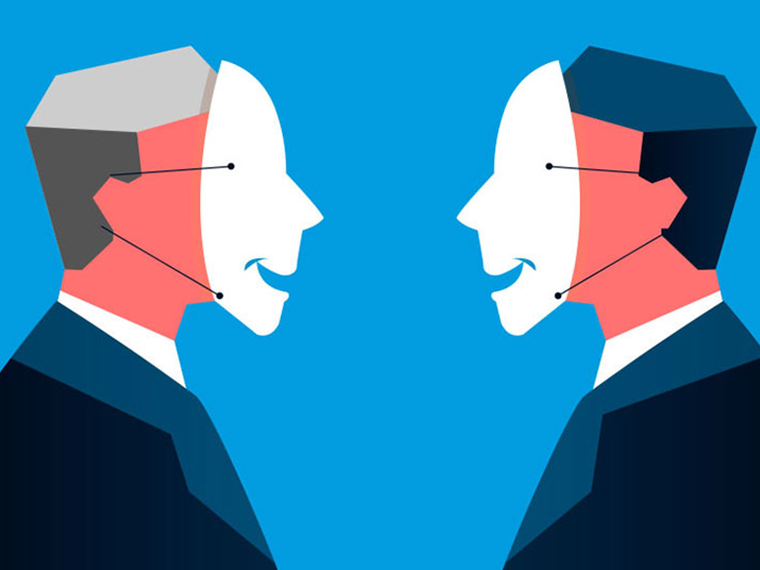Unintended consequences in trying to apply market solutions
According to the U.S. Labor Department, female opticians make 68% of what their male counterparts make. Female tax prep pros bring in 72% compared with male tax preppers. Female judges, magistrates and other judicial workers earn 70% of what their male peers make. Waitresses earn 77% of the wage for waiters. Full-time female lawyers earn 77% of their male colleagues.
One school of thought suggests society give these victims of the gender wage gap — indeed, give to all those disadvantaged by employment discrimination — access to the pertinent information and encourage them to negotiate for a better deal. Wage transparency, like the free flow of information across other markets, would help better align worker contributions and pay levels, regardless of gender, race or other characteristics, this line of reasoning goes.
Opt In to the Review Monthly Email Update.
However, a working paper by UCLA Anderson’s Hengchen Dai, University of Wisconsin’s Xiaoyang Long and Washington University’s Dennis J. Zhang suggests that arming workers with wage information might in fact exacerbate the wage gap, not close it.
In two field studies, an online experiment and additional modeling analysis, the researchers find that while wage transparency does encourage the underpaid to negotiate, it also seems to embolden all workers, not just those who earn a below-norm wage. After all, by definition, transparency means that everyone has access to the wage data.
“Wage transparency may amplify wage inequality by prompting workers who are already highly paid to ask for more,” they write. “Wage transparency is not necessarily a panacea for wage inequality.”
Among low-wage workers, a 2019 working paper by other researchers found, when there is full disclosure of workplace pay it is the employer who benefits: The data becomes a negotiating cudgel in the hands of the boss, and wages ended up lower, not higher.
In the two field experiments focused on how workers use pay transparency data, Dai, Long and Zhang found that, among participants made aware they were earning a below-average wage, the tendency to negotiate increased by 34% to 132%.
But the transparency also lit a negotiating fire under workers who were told that their salary was in fact average; negotiating rose 38% to 88% for the normals, compared with workers who didn’t get any comparative insights about their salary.
Transparency Tide Lifts All Negotiating Boats
In one field experiment, the researchers posed as real-world employers on the Fiverr online platform that connects employers with contract work for freelancers. More than 300 gig workers received a job offer from the researchers’ employer account for a writing gig. The Fiverr platform enables gig workers to accept, decline or negotiate after receiving an initial offer.
The researchers offered $40 for the gig. A control group was simply told of the $40 offer. Three other groups were offered the same $40, but with an additional piece of information: Some were told that in a similar previous gig the same employer offered $25 for the work; others were told the previous pay for this work was the same $40; and a final subset was told the prior time the employer paid $55.
The folks primed to understand they were being lowballed (they read that a prior hire was paid $55, not $40) had the highest itch to negotiate (25%), and 1 in 5 told they were getting the same deal as a prior hire wanted to negotiate. Both groups opted to negotiate in higher numbers than the 10.6% of the control group who chose to negotiate.
Another field experiment conducted on Amazon Mechanical Turk, the crowdsourcing platform for remote and contract workers, produced similar results.
The Lake Wobegon Effect and Salary Negotiation
The researchers next dived into an experiment designed to learn more about the interplay between wage transparency and one’s sense of where their skills land in the office pecking order, and how that may drive the desire to negotiate.
They ran an online experiment where 400 participants were asked to imagine they had applied for an English teaching position and had received an offer. Some participants were not given any historical data; others were told their offer was in line with previous offers made by the employer.
To explore how one’s perceived sense of self may come into play, some participants were primed to think they were better than average: They were told to imagine that they had looked at the LinkedIn profiles of other recent hires and found their potential new colleagues weren’t as qualified as they were. Other participants were not prompted to give themselves a strong self-assessment.
Then everyone was asked to weigh in with how pleased they were with the offer (on a scale of 1 to 7).
The participants primed to have a high self-assessment of their skills found the merely “average” salary offer less to their liking than participants with a high self-assessment who didn’t know whether their salary was average.
Among participants who hadn’t been primed to think they were better than recent hires, there was the opposite effect. Those who had the historical data had a higher level of happiness with the offer compared with those who hadn’t been told that their offer was in line with past offers.
Further analysis through modeling supports the behavioral tendency for people with a high sense of their value to want to negotiate more when they are told a salary offer is merely average, than when there is no historical wage data provided.
Their simulation based on the model further identifies circumstances in which wage transparency can amplify wage inequality in the long run by prompting workers who are already on the higher end of the pay spectrum to ask for more. For example, this outcome is more likely to occur when the initial wage offer is relatively high (versus low).
It is the rare underpaid worker who will have the wherewithal to effectively harness wage data to their advantage in a system where employer and (more highly paid) colleagues can wield the same data.
If you happen to be a stakeholder motivated to address wage inequality, this research suggests wage transparency is far from a cure-all.
Featured Faculty
-
Hengchen Dai
Associate Professor of Management and Organizations and Behavioral Decision Making
About the Research
Dai, H., Long, X., Zhang, D.J. (2021). Wage Transparency, Negotiation, and Reference-dependent Utility.




